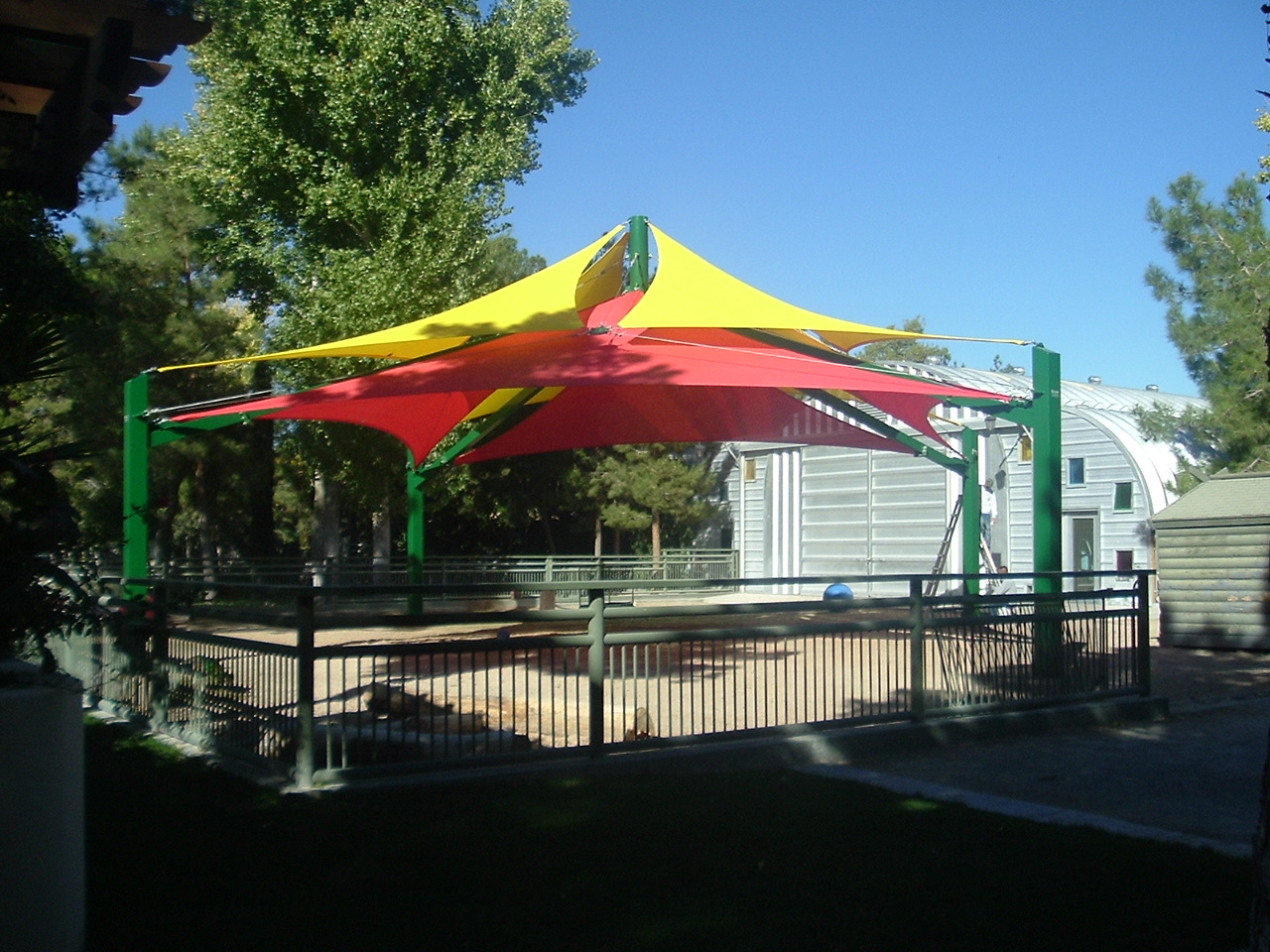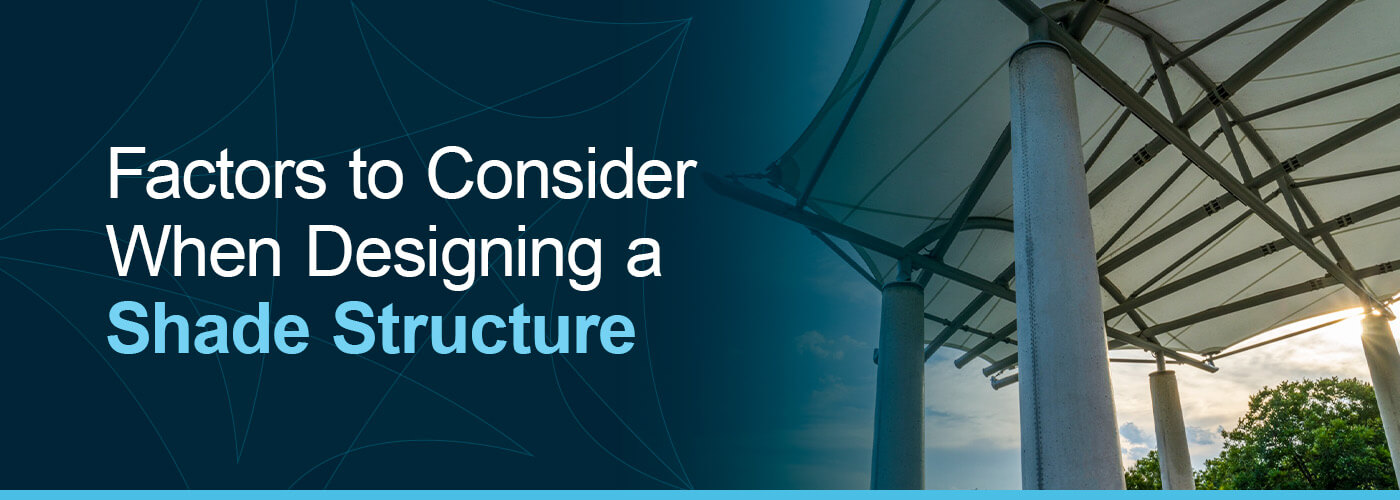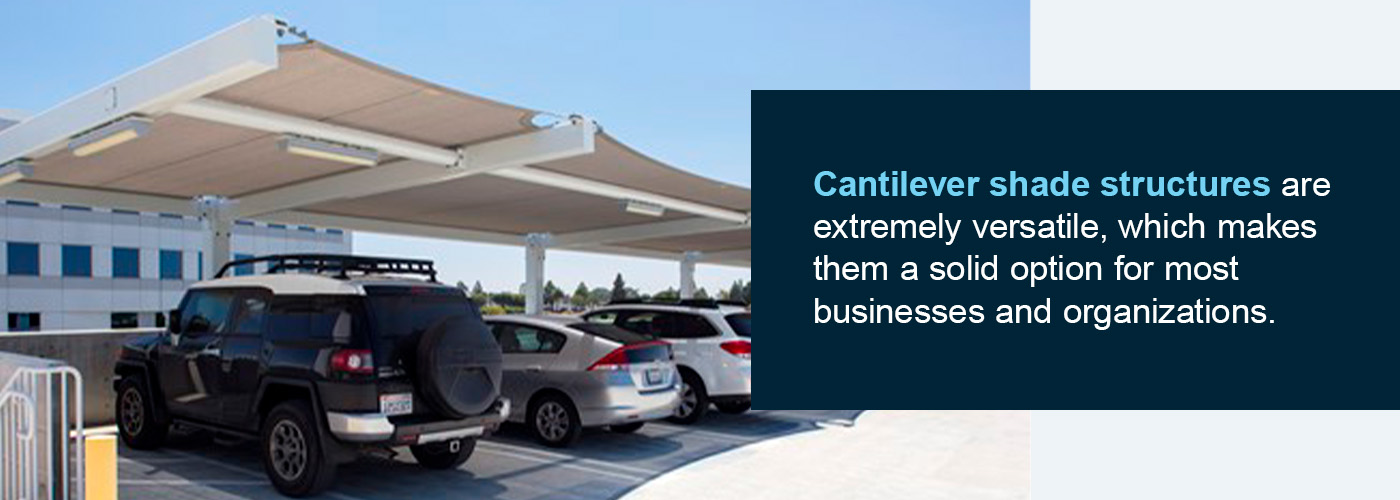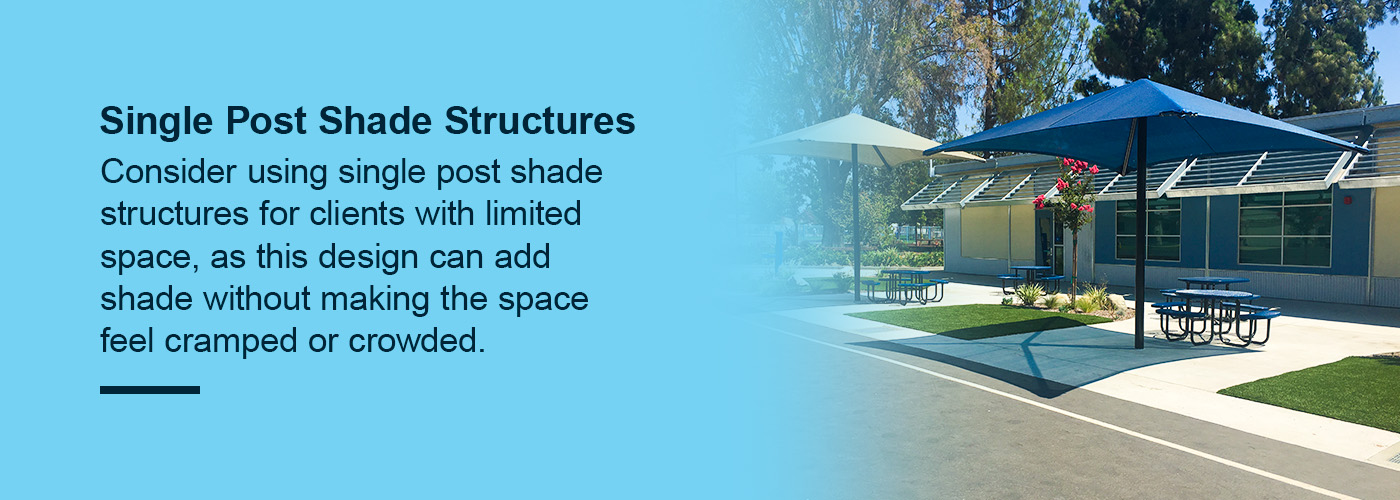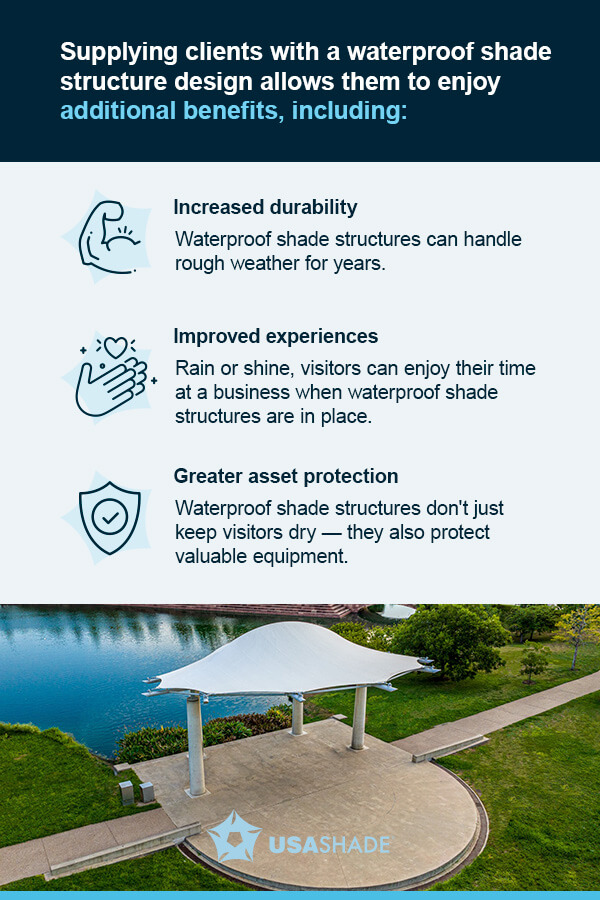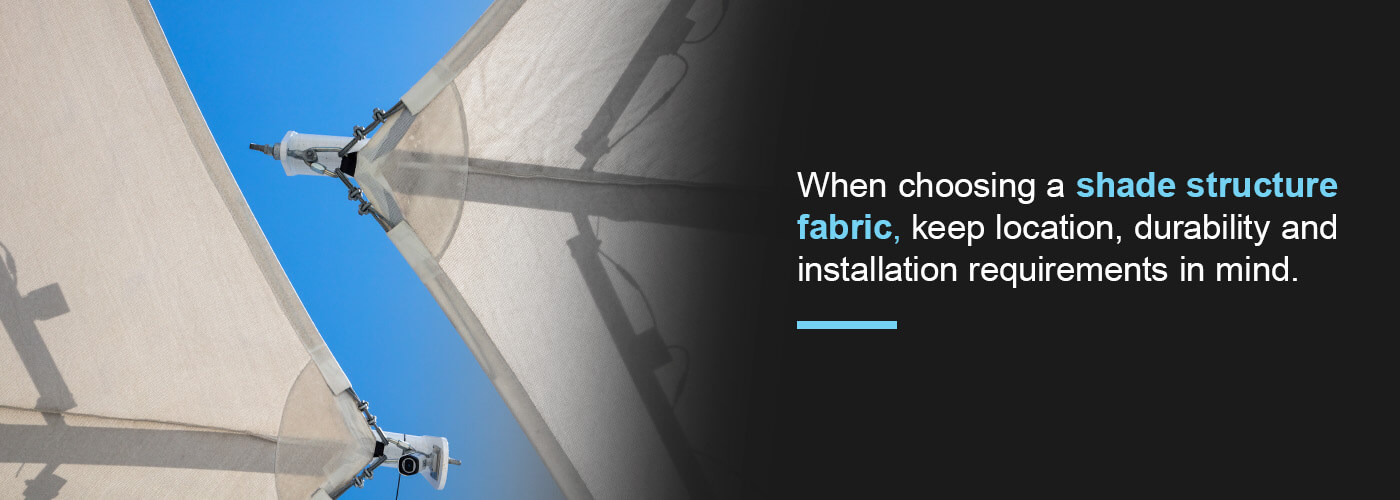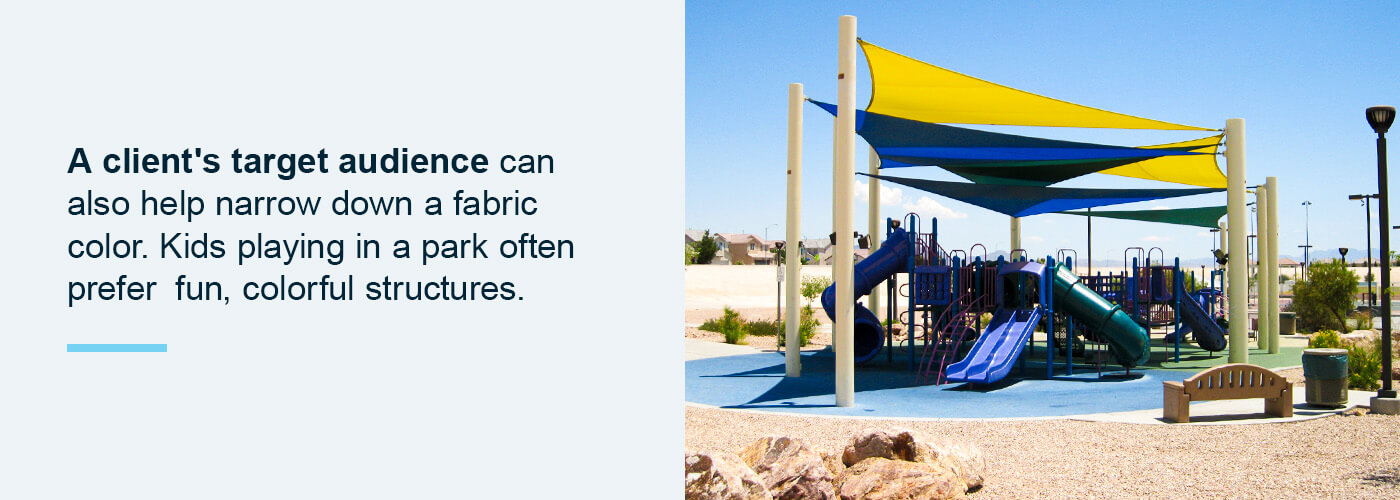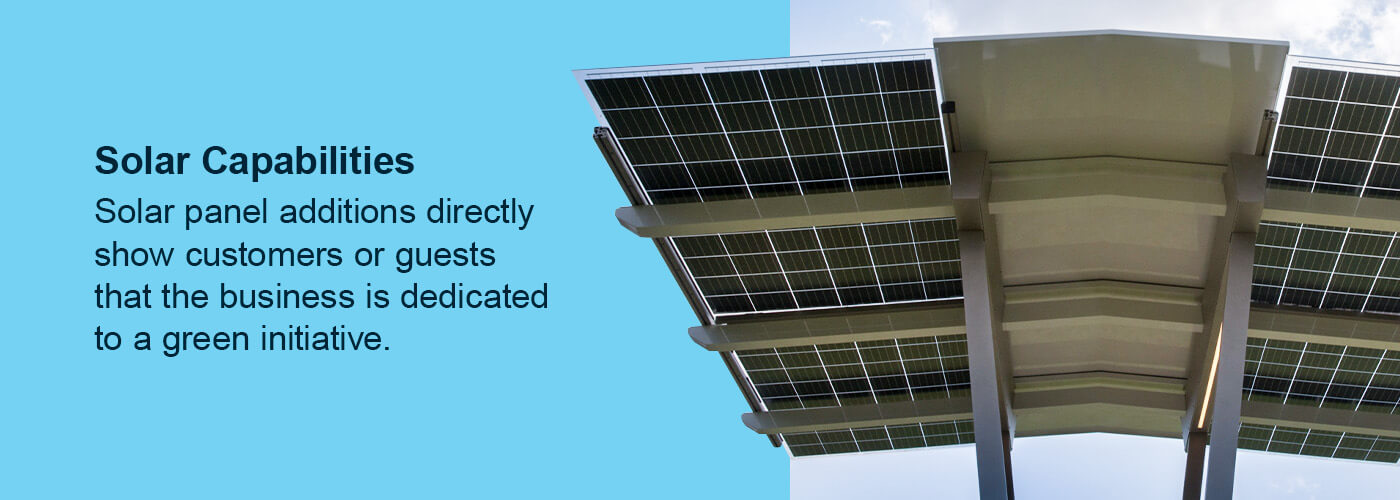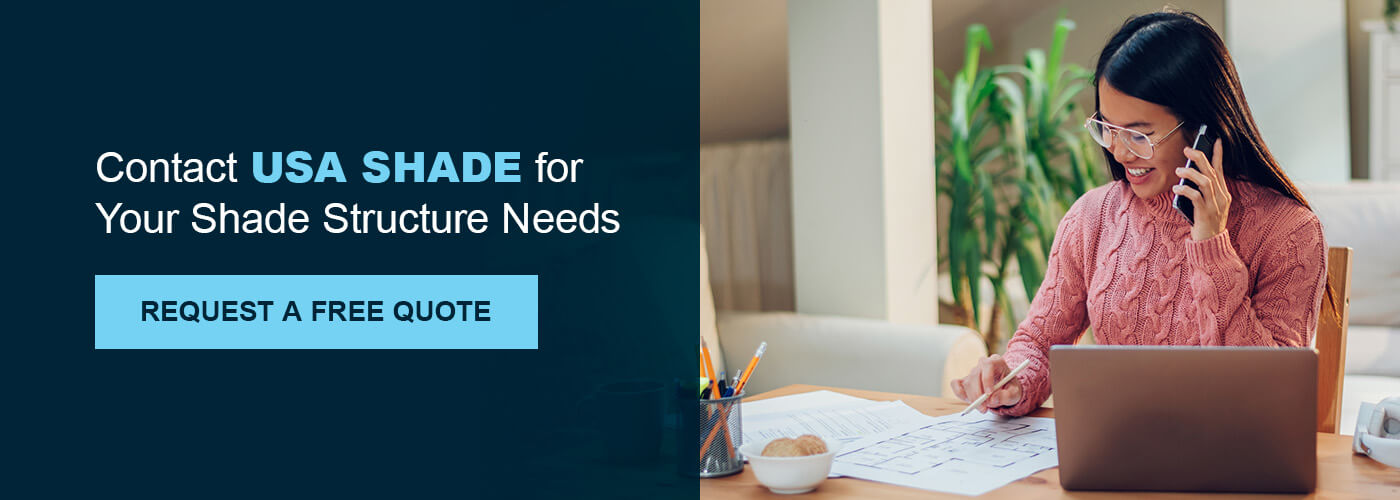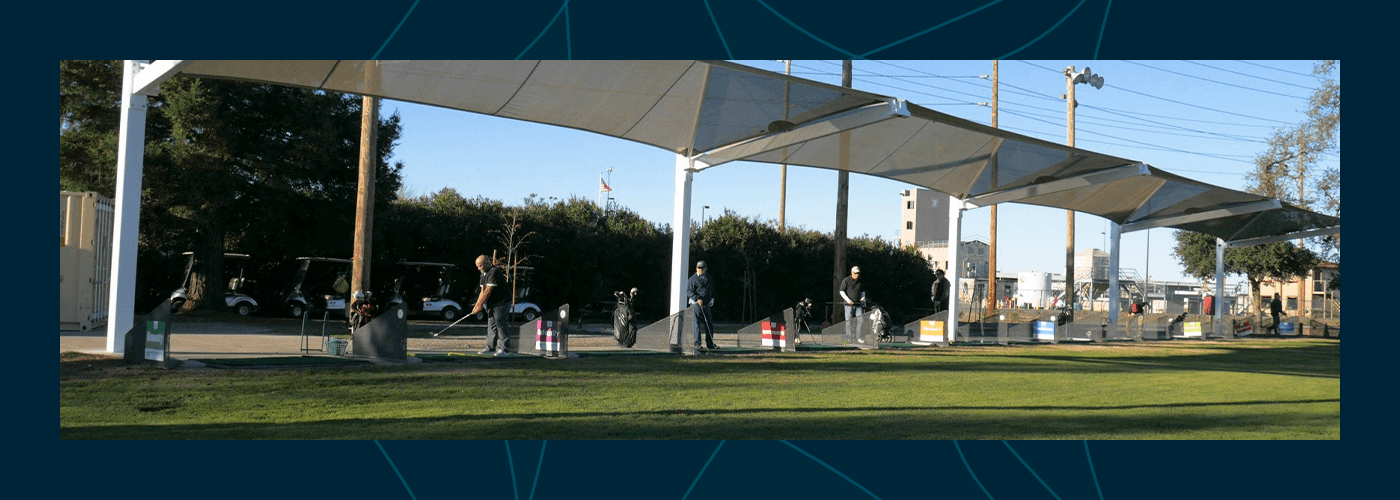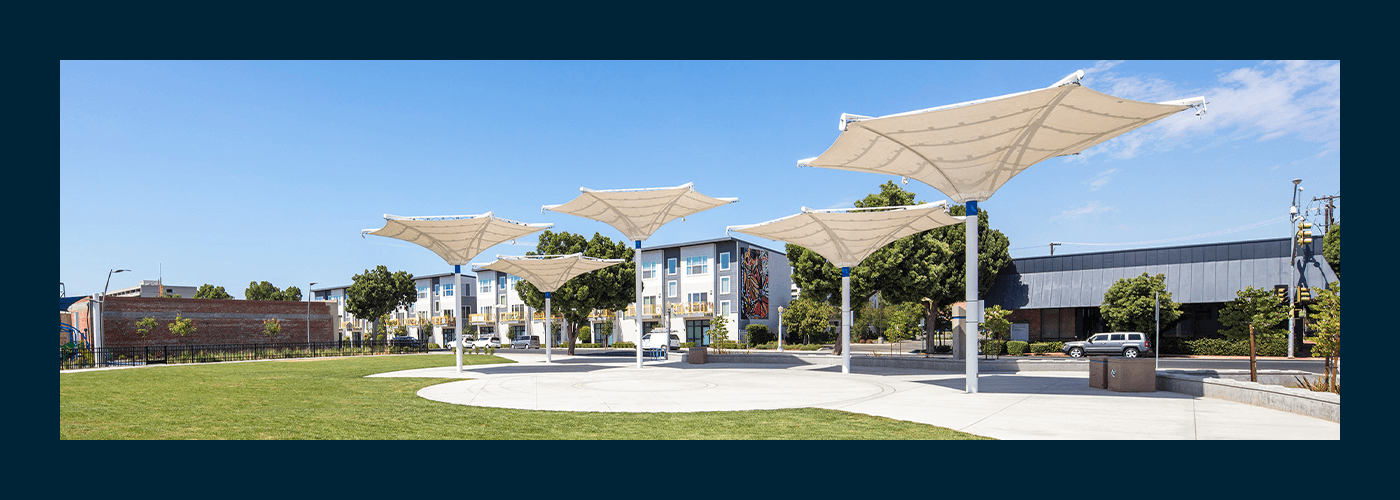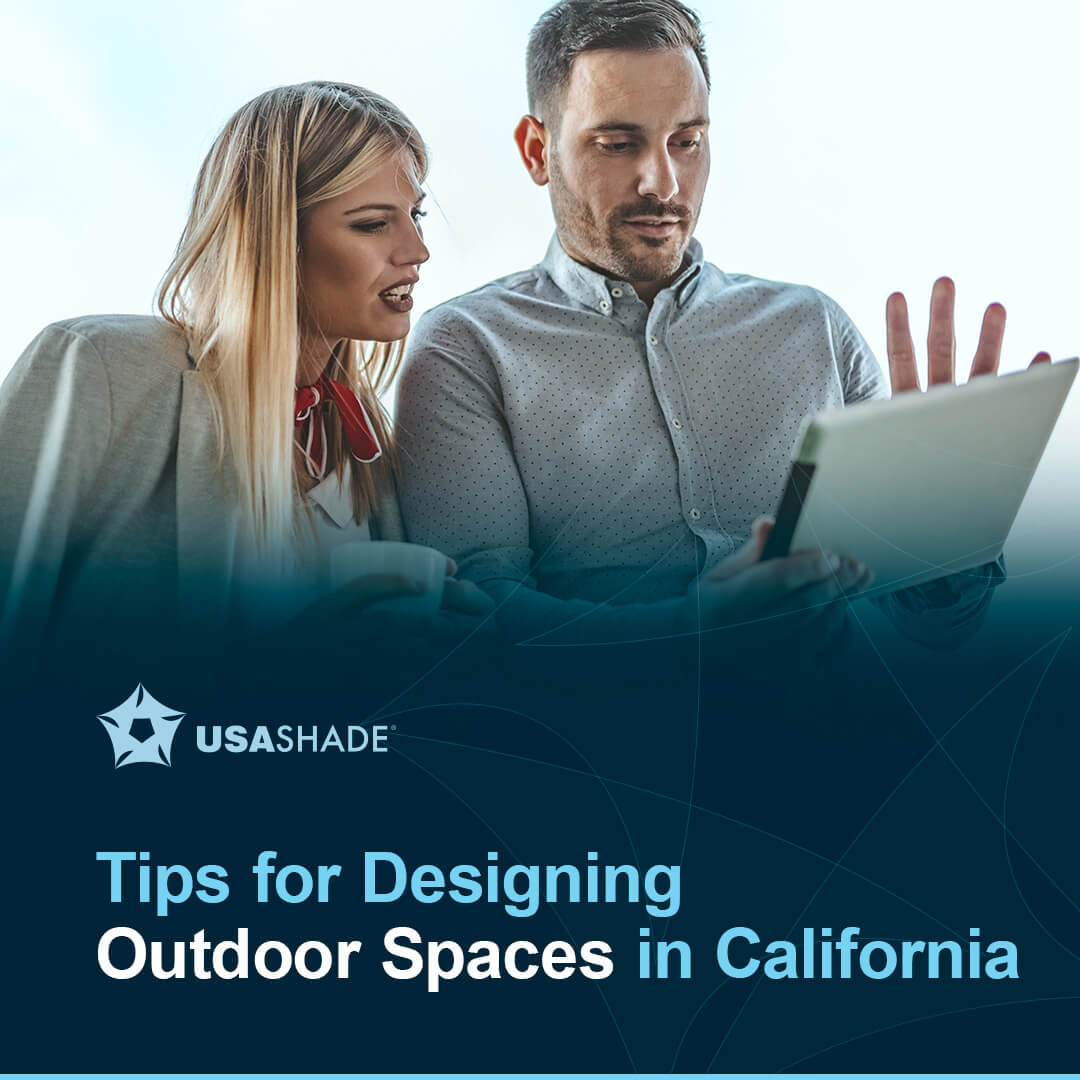Bring your clients innovative solar architecture with Haven solar canopies or other solar shade structures. Solar shade structures provide many benefits to a variety of businesses. Solar panels turn a typical shade structure into a multifunctional piece of equipment.
A solar shade structure will help clients generate energy while providing guests shade. This energy can be used to help run daily operations, or it can supply supplemental energy for guests to charge their phones or laptops. With solar panels in place, shade structures become so much more than a nice place to cool off. Guests can stay charged and connected, potentially increasing their experience satisfaction, and the business can lower its energy bill.
Additionally, solar shade structures have the potential to generate more energy than the business needs. In this case, the business can sell the extra energy back to the grid. This is known as net metering, and it can provide the business with some extra revenue.
Unlike other traditional shade structures, solar shade structures can qualify for a tax credit. With tax credits, lower energy bills, improved customer satisfaction and more, solar shade structures provide clients with a high return on investment.
Picking a Shade Structure Fabric
Choosing the right shade structure fabric is crucial for both aesthetic and functional purposes. Three popular and high-quality shade structure fabrics to consider include:
1.) High-density polyethylene (HDPE): HDPE is a durable fabric that can last up to 12 years. With 95% shade protection, 97% UV protection and up to 70% water runoff, this fabric offers protection for years. HDPE requires little maintenance, with only a quick and simple cleaning required every now and again.
2.) Polyvinyl chloride (PVC): PVC fabrics are great for both permanent and temporary structures. Certain PVC fabrics can come in flame-retardant or waterproof designs. With strength and durability, PVC is a classic fabric option.
3.) Waterproof fabrics: There are a variety of waterproof fabrics to choose from, including Novashield®, PVC and polytetrafluoroethylene (PTFE). PTFE is recommended for the best waterproof protection, but the other fabric choices are great as well.
Each of these shade structure fabrics comes in varying levels of weather and UV protection, fire retardancy, and translucence. These fabrics are also available in many colors, so you can always find a design that meets your client’s aesthetic preferences.
How to Choose Shade Structure Fabric
With so many fabric options available, how do you know what the right choice is for your client? To help narrow down the fabric options, consider which fabric will best meet your client’s functionality needs. Specifically, when choosing a shade structure fabric, keep location, durability and installation requirements in mind.


